Benita Kliewer
Advisor: Dr. Mercedes Garcia Holguera
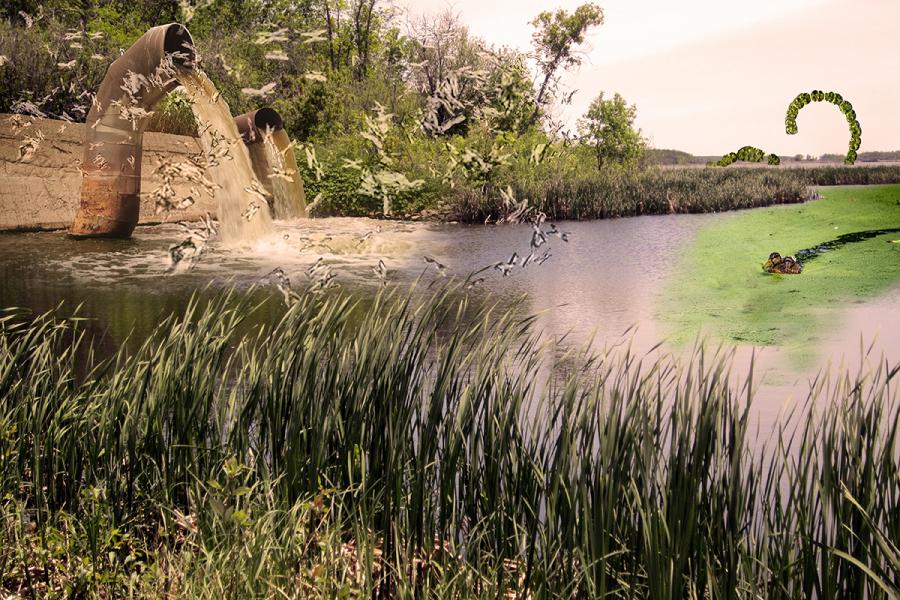
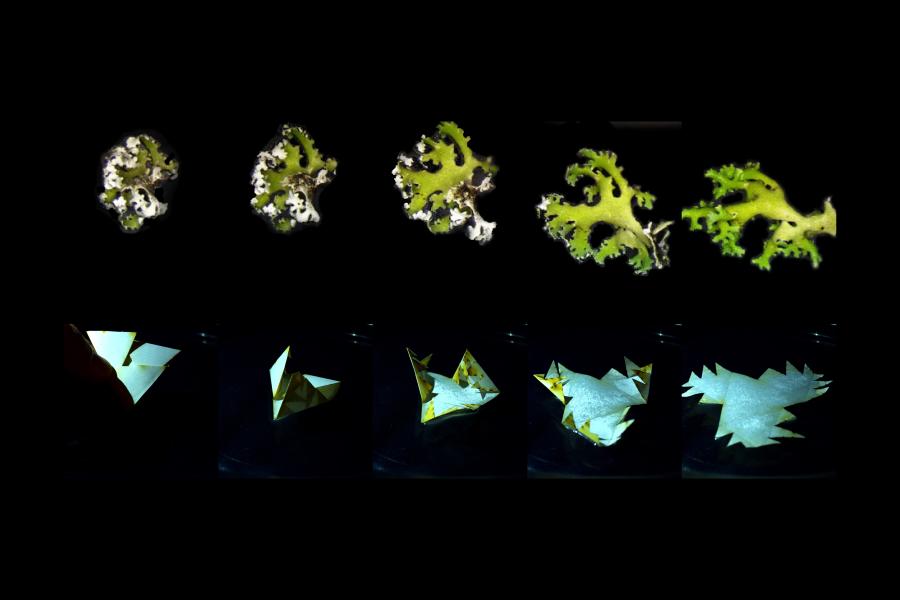
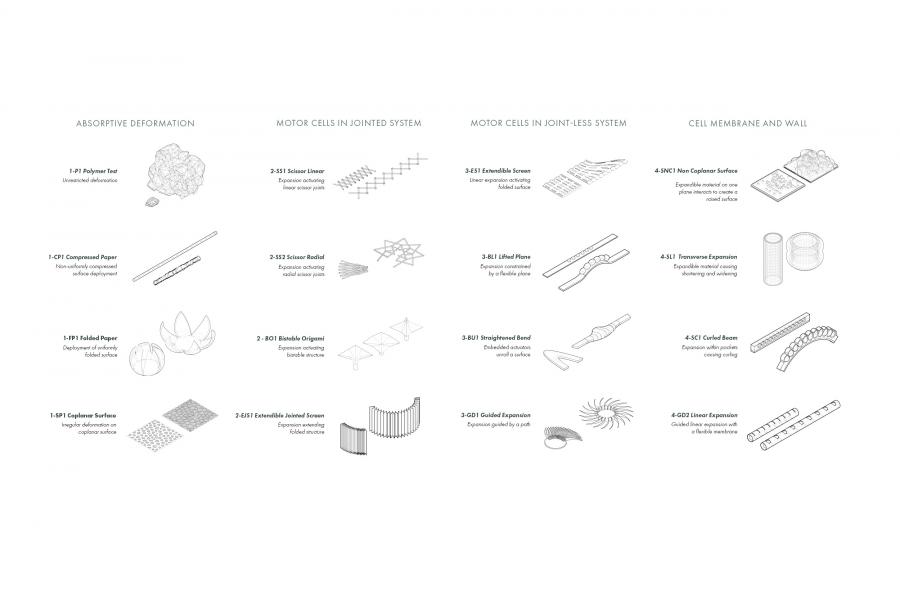

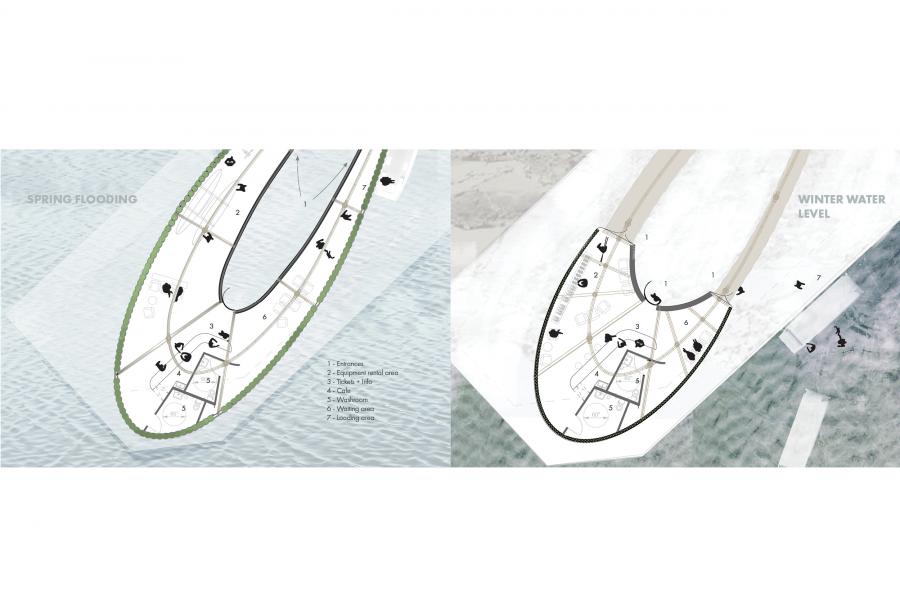
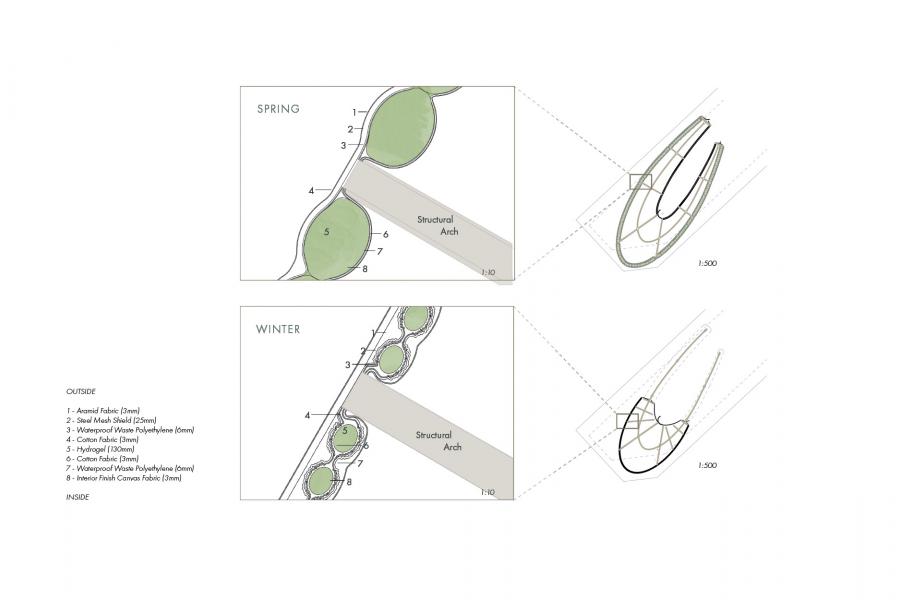
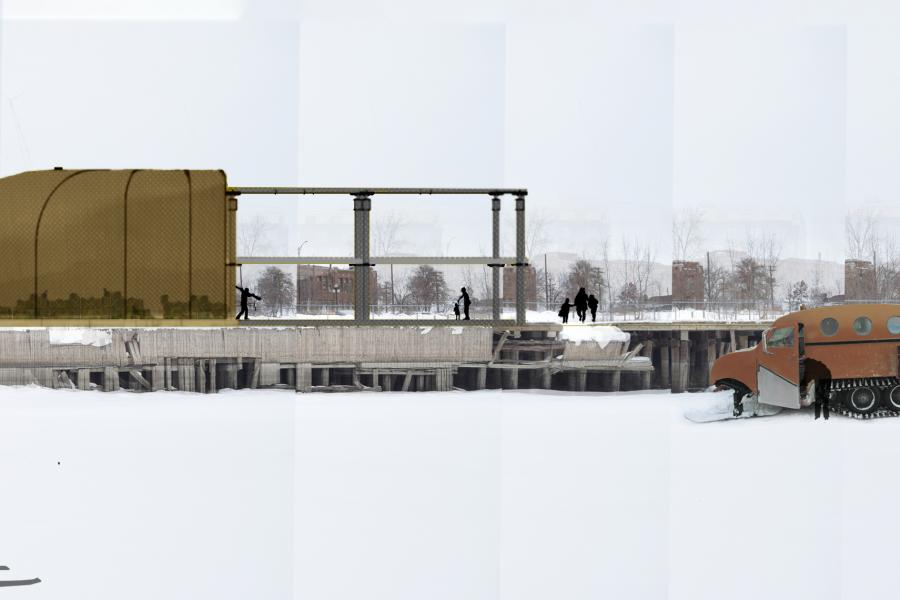
Turbulent Water: Biomimetic Approaches to Receiving Floodwaters in Winnipeg
Human activity has transformed the landscape of the Red River Valley to make it more suitable for agriculture, and in the process, the capacity of the land to absorb water during major storm and flood events has been reduced. As a result, during flooding events, there are repercussions throughout the extensive watershed . More agricultural, industrial and human waste flows into the rivers, accumulating in common points like Lake Winnipeg, causing problems like eutrophication of the water, leading to death of aquatic creatures and affecting water security downstream, including in several First Nations1 .
In this research project, I explore responses to the seasonal flooding of the Red River in Winnipeg that reduce the negative impacts while also anticipating and welcoming the arrival of water. Conceiving of water as a morphogenetic actuator, flooding can drive a passively performative architectural intervention that addresses water contamination during times of high water.
Drawing inspiration from biological organisms and systems such as lichen2 which have evolved over millennia to interact in unique ways with water in their environment, this thesis seeks new ways of interacting with water. This exploration also looks at existing research into material response to environmental changes, like HygroSkin by Achim Menges and ICD Stuttgart3 and Thermobimetal by Doris Sung and DOSU Studio4 , as this research seeks to imagine how form may change with the absence or presence of water. As climate change exacerbates existing conditions, developing diverse responses to environmental challenges, like flooding, becomes paramount in creating a resilient system.
1. Manitoba Keewatinowi Okimakanak Inc., “MKO Concerned by Ongoing Practice of Releasing Raw Sewage into Winnipeg Rivers,” Manitoba Keewatinowi Okimakanak Inc., May 4, 2022, https://mkonation.com/concernedbyrawsewageinrivers/.
2. “Ice Nucleation Captures Water.” Ask Nature, last modified 2016, https://asknature.org/strategy/ice-nucleation-captures-water/.
3. “Simple filtration system from MIT contains an abundantly available resource, xylem tissue from native trees, that naturally filters pathogens from water.” Ask Nature, last modified 2021, https://asknature.org/innovation/low-cost-water-filtration-inspired-by-non-flowering-trees/.
4. “Making Passive Architecture Active.” DOSU Studio Architecture, last modified 2018, https://www.dosu-arch.com/.
